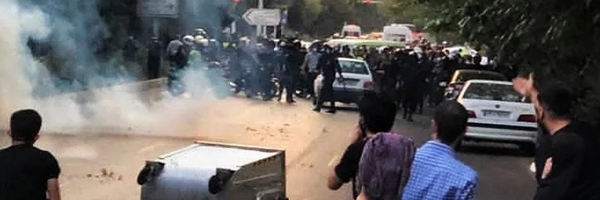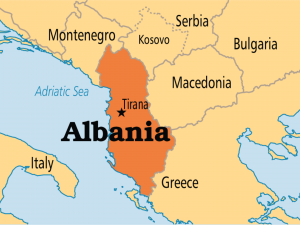Protests in Iran

The opportunity to visit Iran at this time has aroused great interest among Serbian and International, especially western colleagues. Namely, if you follow the western media and especially various foreign services in Persian language, you get the impression that everything is on fire there, that hundreds of thousands of people are protesting and that the country is facing great instability. So this was an extraordinary opportunity to see what is really happening, and to evaluate the reports I hear about the situation in both domestic and foreign media with the most competent Iranian colleagues.
As is well known, Iran experienced a wave of protests after September 22, when a young woman, Masha Amini, died in the custody of the Iranian moral police. A prominent place among the protesters was occupied by women, especially younger ones, then students and other parts of the urban population. The Western media covered all of this with rhetoric about a spontaneous protest, about the struggle for the emancipation and liberation of women who allegedly live in a servile and humiliating position in Iran, etc. This version from the cartoons or fairytales, of course, also has another side, which unfortunately you cannot hear in the Serbian and western media.
Image is from InfoBrics
 The prehistory of these events begins in July, when the media announced that Iranian services had carried out hacking attacks on Albania’s cyber space. This happened again in September, which led to the expulsion of Iranian diplomats and the severance of diplomatic relations between the two countries.
The prehistory of these events begins in July, when the media announced that Iranian services had carried out hacking attacks on Albania’s cyber space. This happened again in September, which led to the expulsion of Iranian diplomats and the severance of diplomatic relations between the two countries.
Why Albania? Well, this open Balkan friend and partner of ours has a very interesting and specific place in the intelligence world. In addition to being the center of the Gulenist network in the Balkans since 2016, Albania is also one of the two most important centers for the activities of the Iranian opposition. During my last visit to Tehran in 2020, colleagues from their Strategy Institute showed me photos of troll factories located in this country, where hundreds of Iranians sit in hangars and wage cyberwars, write comments as bots acting subversively against the current order in Tehran. Everything happens, of course, with the support of the host, in coordination with the Western intelligence systems, and the money is provided by the Middle Eastern country that most often finances such things, which happens to be the patron of Wahhabism around the world.
So the supposedly spontaneous protests that began after September 22 were prepared months in advance in coordination with Western intelligence systems. We will remember the protests from 2009, and on several other occasions the same actors tried to undermine or overthrow the regime in Iran. Let’s remember that in the meantime, evidence was disclosed that MI6 and the CIA organized a coup in 1953 that overthrew the democratic government of Muhammad Mossadegh, so the accusations of the same actors today have full logic and legitimacy. The Americans have not had an embassy there since 1979, and the former embassy where the hostages were kept, today is a museum that can be visited with everything found there, including interrogation rooms or a special section for encryption and similar operations. Today the institution exists under the name Museum of the USA Den of Spionage.
But the British are also present with the embassy, and Iranian officials again accused them of subversion. It is also extremely interesting that the late Masha was from the Kurdish part of Iran, which has also become the subject of serious international interest in recent months. This part of the imaginary Kurdistan was the only one that was peaceful during the last decades and there were no serious rebellions and unrest in it. In the Iraqi and Syrian parts, separate states within the state were created, and in the Turkish part, there are constant fights between the central government in Ankara and parts of the PKK, which Turkey defines as a terrorist organization. That is why many international actors are interested in burning that part as well.
As a result of the protests, the regime abolished the so-called Moral Police, which the opposition considers a great victory. On the streets of Tehran, girls and women walking without covering their hair can be seen en masse. This is especially pronounced in the north, where the wealthier parts of the elite live, as well as around the universities. In the southern parts of the city and in other places, this is not the case. The authorities believe that in these conditions it was necessary to show a certain flexibility so that the protests would not turn into even more serious manifestations, where dissatisfaction could go to the side of social protests due to inflation and the like.
The protests have slowly died down and life is going on normally. From time to time, for example, several hundred protesters gather around some university or in Tajriz square, and in the evening, even from the apartments of young people, you can hear chants of “death to the dictator”, directed against the supreme leader. The future will show whether this episode was another failed attempt at destabilization or the beginning of some more serious processes of westernization of society. In an increasing number of newly opened cafes, young people drink coffee instead of tea, while the music that can be heard in any western bar, but is not yet on the radio, comes from the speakers.
*
Misa Djurkovic is a researcher from Belgrade, Serbia and at the time director of the Belgrade based Institute of European Studies.
